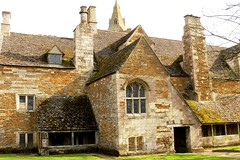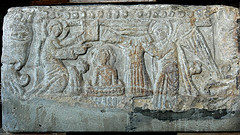Lyddington
Submitted by walwynOriginally the late medieval wing of a palace belonging to the Bishops of Lincoln. By 1600 it had passed to Sir Thomas Cecil, son of Queen Elizabeth's chief minister, who converted it into an almshouse for twelve poor 'bedesmen' over 30 years old and two women (over 45), all free of lunacy, leprosy or the French pox.
This remarkable window (1490-1505), rediscovered packed away in 1932, forms the lower section of the great east window at Stanford-on-Avon. It is one of the most striking survivals of late medieval royal propaganda in stained glass, created to celebrate the accession and legitimacy of Henry VII and the founding of the Tudor dynasty.
Wolfhampcote
Submitted by walwynNowadays St Peter's church at Wolfhampcote is owned by the Churches Conservation Trust, and remains a consecrated building, although services are only held here once a year.
Melitaea cinxia
Submitted by walwynRosenkrantz, Arild
Submitted by walwynKempe & Tower
Submitted by walwynLavergne, Claudius - Paris
Submitted by walwyn
Claudius Lavergne was among the foremost figures of the mid-nineteenth-century revival of stained glass in France, a painter and critic whose intellectual formation under Jean-Auguste-Dominique Ingres and collaboration with Adolphe-Napoléon Didron positioned him at the intersection of academic draughtsmanship, historical research, and religious reform.










